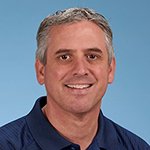I think my son has grown a lot recently. Is this normal considering he has been much less active?

Adolescents
Have you noticed that your teenage athlete had a big growth spurt over the last few months?
I’ve seen several young athletes recently for annual physicals and found that many of them have grown quite a bit taller since March.
This shouldn’t be a major surprise.
In the past, athletes and other performers/dancers who have taken months off have also tended to experience growth spurts.
So, why have athletes grown taller when not spending time on the field or court?
- Without the higher energy demands from full sports activities, the body can dedicate more calories to overall height accumulation.
- Athletes spending more evening hours at home get increased numbers of home-cooked meals, which tend to deliver better nutrient and caloric amounts needed for growth.
- Then “at the end of the day” you throw in probably the most important variable for promoting more growth — sufficient sleep!
Without having to balance school, homework and practice/rehearsal/private lessons/competition commitments, suddenly the goal of eight hours of sleep is being attained on a nightly basis.
Now, those growth spurts do bring some challenges with them.
How should coaches, instructors and parents be prepared for when those taller athletes return to play?
Related Posts:
- Adolescent Growth Spurts & Athletes: What’s Normal?
- Disaster Prep Making an Emergency Kit
- Distance Learning Tips for Working Parents
- Expect more awkward movements. The previously graceful gymnast who floated across the floor now routinely trips over everything. The key muscle support groups behind the shoulders and hips often need more developmental time to adequately control movements of the now longer arms and legs. In addition, the central nervous system also needs time to catch up with coordinating movements, overall balance and joint positioning.
- Anticipate earlier fatigue due to that lack of central strength. Plan on fewer numbers of skill repetitions, sprints and leaps/jumps with longer rest periods between sets of each.
- Overall soft tissue flexibility will be reduced as increases in length of muscles, tendons and ligaments often lag behind bone growth.
- Expect more soreness, especially at points called apophyses where larger muscles attach to growth areas of bone. Prime examples include the hamstrings coming off the pelvis, quadriceps attaching to the shin bone, and the calf muscles ending at the heel bone.
- There will be a higher center of gravity, which may affect turns, leaps and changing direction.
- Equipment may not fit — there could likely be a need for larger shoes, protective pads, helmets and sport-specific items such as bats, gloves and sticks.
- Instructors might have to identify different weight-lifting patterns due to changes in height and strength.
This is a key time to return to the basics of sports — almost as if working with true beginners. Give your young athlete ample time to essentially relearn how to recruit and activate key muscles to control those longer legs and arms. Turns, tumbling and changes of direction will look somewhat out of control until the athlete becomes more accustomed to a higher center of gravity. This is also a good time to correct any bad habits or “cheating” that took place in the past.
Individualized assessment of technique and core strength development (back of shoulders, hips and abdominal region) should be a priority. Don’t be afraid to move slow and focus on quality and details rather than quantity and rapid advancement.

Dr. Chris Koutures is a dual board-certified pediatric and sports medicine specialist who practices at ActiveKidMD in Anaheim Hills. Visit activekidmd.com or follow him on Facebook (facebook.com/activekidmd), Instagram (instagram.com/activekidmd) or Twitter (@dockoutures).
(Opening Photo Courtesy of Andrew Seaman/Unsplash.com)









Leave a Reply